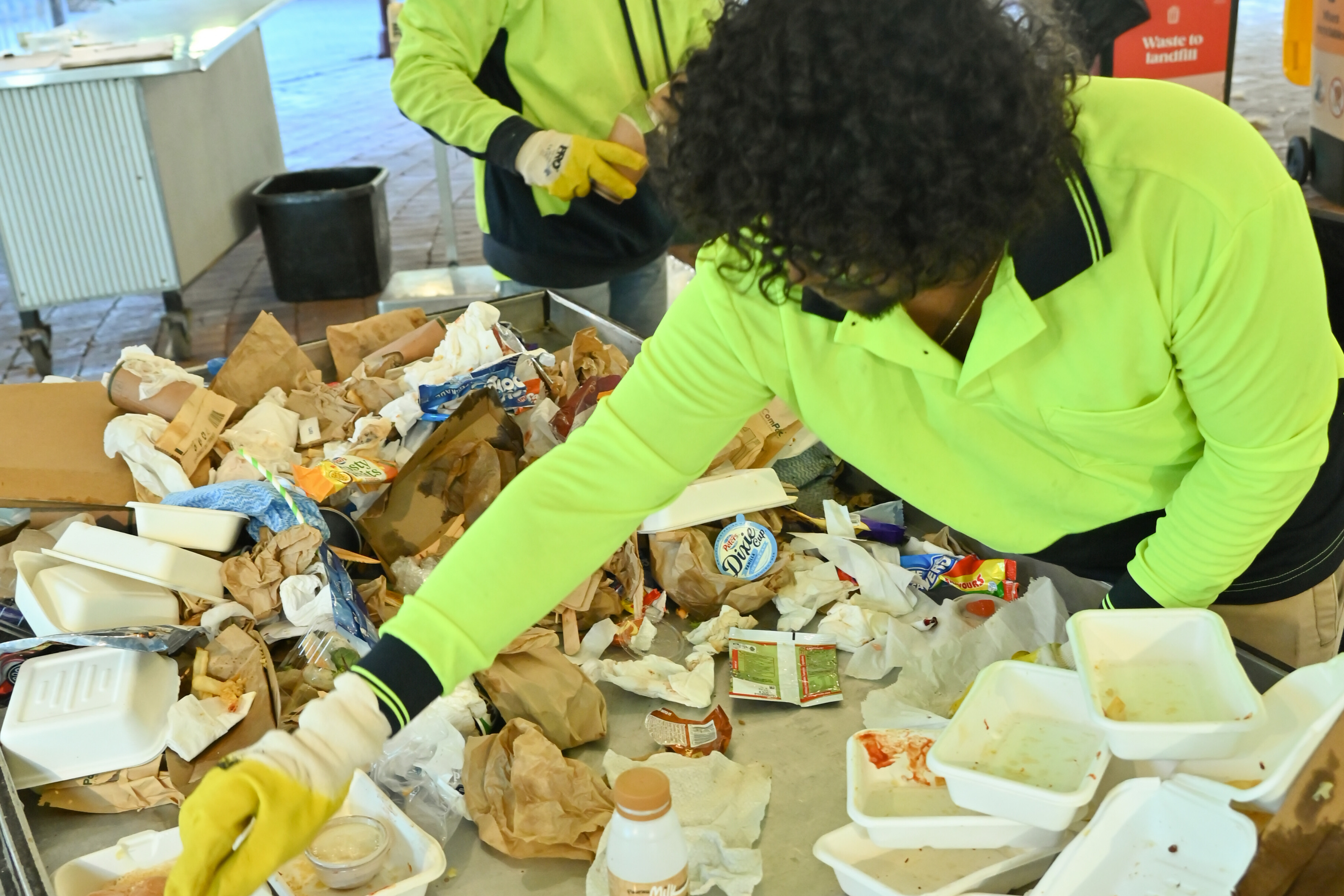
Improving waste separation at Adelaide Zoo through smart bin design, clear signage, and staff education.
Project overview
In 2024–25, Adelaide Zoo implemented a major upgrade to its public-facing bin stations to improve waste separation and landfill diversion, including:
- the introduction of organics bins for disposal of food and compostables
- a reduction of bin stations from 30 to 20, improving efficiency and reducing clutter
- updates to bin colour for 10c container collection, moving to white lids for this stream
- the installation of refreshed educational signage
- the delivery of support for café staff, including staff briefings on the new bins and the new compostable packaging options.
These changes make the sorting of waste materials simpler for visitors to the zoo, while also aligning with better-practice resource recovery principles.
Waste audit snapshot
To measure the impact of the new bin system, Adelaide Zoo conducted 3 waste audits:
- Before the new bins were rolled out
This baseline audit looked at original 3-bin stations (general waste, dry recycling, 10c container collection). It provided a snapshot of disposal behaviour before any changes were made. - Right after the new bin system was installed
This audit was conducted just after the rollout of the new 4-bin stations, which included organics, mixed recyclables, 10c drink containers, and landfill. Bin wraps were updated, and overhead signage was installed. The audit helped assess how well the new system was working. - 3 months later
The final audit followed the full signage rollout and additional café education.

The audits measured how accurately patrons placed items in the correct bins and tracked landfill diversion rates. They focused on 5 bin stations located near the zoo’s café, where most front-of-house waste originates.
Waste was sorted into categories to identify trends and areas for improvement. These categories included:
- food waste (loose and packaged)
- compostable and non-compostable food service ware
- mixed recyclables
- 10c containers
- contaminants.

Key outcomes
- Landfill diversion increased by 25%, reaching 47%
- 43% of food waste was correctly placed in organics bins, comparable to high-performing kerbside systems
- The newly introduced organics bins had just 4% contamination
- 10c container contamination fell from 41% to 3%, aided by colour and label changes.
- Mixed recyclables contamination nearly halved, from 44% to 23%
Next steps
To build on this success, recommendations include:
- ensuring all compostable plastic packaging displays the AS 4736 seedling logo, to indicate it can be disposed of in the organics bin
- continuing patron education on waste separation
- exploring interactive displays to engage visitors
- considering the introduction of a reusable food and beverageware system in the café to reduce packaging waste.
Adelaide Zoo’s bin system overhaul showcases how infrastructure, education, and data-driven audits can drive meaningful sustainability outcomes in public spaces.
Project funding and delivery
This project was delivered by Rawtec, with funding from Green Industries SA.




